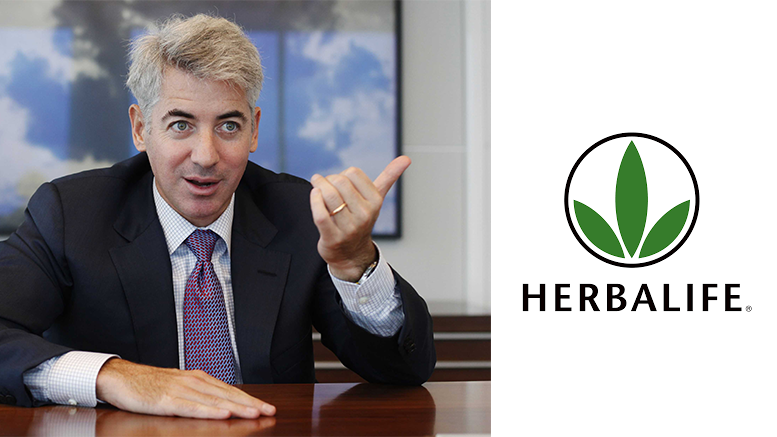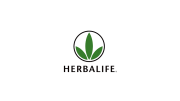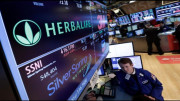On July 15, 2016, Herbalife Ltd and the Federal Trade Commission reached an agreement that settles the FTC’s complaint. The company has agreed to pay $200 million to compensate consumers who may have been deceived into a rose-colored view of their prospects selling the branded diet and personal care products (and selling the opportunity to recruit others to do so.) It has also agreed to restructure its marketing operations.
This is widely regarded as a loss for Bill Ackman, who has had a short play in place on Herbalife for a long time, longer than the life of this FTC complaint. It is seen, too, as a win for Carl Icahn, who has rather vociferously taken HLF’s side against Ackman’s criticisms.
Ackman and Icahn argued over the point on the airwaves of CNBC on January 25, 2013, in an impromptu but compelling bit of reality TV.
Herbalife (NYSE: HLF) sells nutritional and skin care products through an international multi-level marketing network. Controversies over whether its MLM has crossed over the very fuzzy line into pyramid scheming became Big News in May 2012, soon after David Einhorn asked pointed questions during HLF’s May 1 earnings call.
The Einhorn Moment
This was the same David Einhorn who, in May 2008, had given a very perceptive and accurate talk at the Ira Sohn Investment Research Conference about how Lehman Brothers would be the next big bank to come under pressure. Since then, when Einhorn talks, people listen. Further, Einhorn had made a very influential bearish case about Green Mountain Coffee Roasters in October 2011 in a slideshow he presented to the Value Investing Conference. The point Einhorn was making in connection with HLF is a close kin to the method he had employed in regard to Lehman Brothers in 2008 and Green Mountain in 2011: he laid special emphasis on what he plainly saw as the accounting trickery involved.
During the earnings call Einhorn asked first, “How much of the sales that you’d make in terms of the final sales are sold outside the network and how much are consumed within the distributor base?” This is important. If the distributor base is consuming much of the product itself, that’s a ‘tell,’ indicating that the distributors see buying the product as part of the dues they pay in the hope of making real money themselves by … expanding the distributor base. If people outside of the distributor base are actively buying Herbalife in big numbers, that is obviously better news for the company.
After a little back-and-forth, HLF’s CEO, Michael O. Johnson, admitted to Einhorn that the company doesn’t “have an exact percentage,” though it believes it is selling approximately 70 percent of its products to customers.
Just by asking the questions, Einhorn set off speculations that he (a) thought HLF an unsustainable pyramid and (b) was short its stock – or was about to go short – on that presumption. Two days later, the stock price was near $46 (before the conference, the price had been above $70).
What happened next? Nothing much … for some time. HLF proceeded to treat $46 as the floor of a new trading range. It back and forth between there are $55 over the next few months.
Ackman Takes the Stage
The next Act had to wait for December 2012. That is when another famous short-biased asset manager got into the act, and was much more explicit in his pyramid-scheme accusation that Einhorn had been. This was Bill Ackman, the founder of Pershing Square Capital Management. Like Einhorn, Ackman had a history of getting some big calls right that gave him some credibility going in. Perhaps most notoriously, Ackman had built up a sizeable position by way of credit default swaps against muni insurer MBIA, and was able to sell those CDS’ for a large profit in June 2008 as MBIA did in fact tank.
On December 19, 2012, Ackman let the world know that he was shorting Herbalife, and promised a detailed account of why the next day. On the morning of December 20, he spoke at the aforementioned Ira Sohn Conference and said that he was short Herbalife. His reasoning was in essence a long-form version of what Einhorn had suggested. Ackman called Herbalife “the best managed pyramid scheme in the history of the world.” Eventually even the best-managed schemes come unraveled, and he said he was betting big that this one would soon.
This created another serious downward move. On the day before Ackman entered the frame, in its closing price on December 18, HLF was at $42.50.
On December 19th, as noted above, Ackman gave the world his bottom line, and HLF closed that day at $37.34.
On December 20th, Ackman gave his detailed presentation, and HLF closed that day at $33.70.
On December 24th, HFL hit its nadir, closing at $26.06.That represented a loss of almost exactly half its value in a single week.
Yet the stock immediately began a steady though unrushed move upward. A year later, it was moving back and forth across the $80 line.
Flash Forward
Flash forward to the period around the FTC settlement. The stock was moving along in a nearly straight line, with a very slight downward slant, in the days before the announcement: just above and then just below $60. The announcement of a settlement set the price up above $70 briefly Friday morning. It ended the day more modestly at $65.26. Still, that was an increase of nearly 10% for the day. Mr. Market thinks Herbalife got a good deal.
There are a number of lessons one might draw from all this. One of them is that the legal/regulatory system in the U.S. has tied itself into knots over the issue of what is or isn’t a pyramid scheme, so that it is impossible to predict in advance what sort of marketing will entail what sort of response.
Article Source: allaboutalpha.com




Be the first to comment on "Herbalife and Ackman: A History"